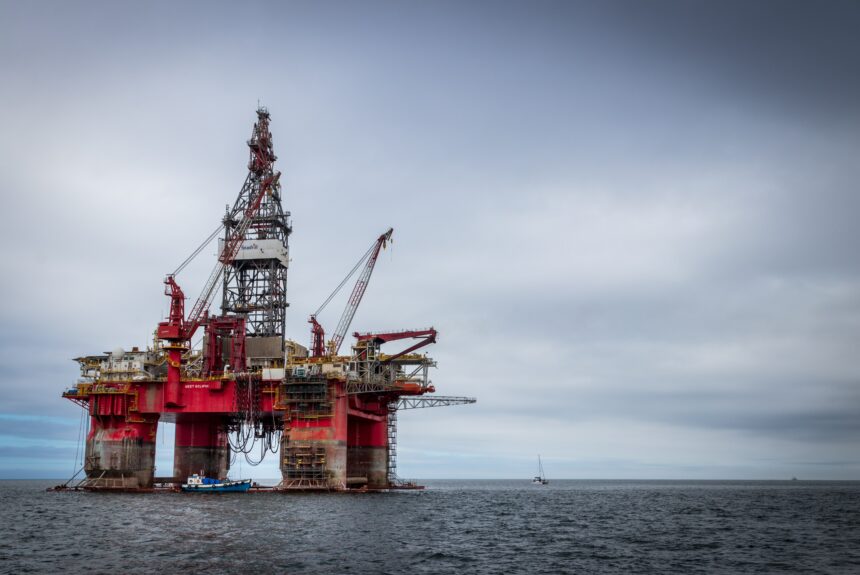Back in the early 1980s, Stevie Wonder released an album titled “Hotter than July.” That indicates it is safe to assume that July was thought of as “hot” at least as far back as the Carter administration.
Still, this year July’s temperatures launched plenty of “dog bites man” stories about heat. “14 days have recorded surface air temperatures greater than 17°C (62.6°F) — spikes that have not been seen for roughly 125,000 years,” Axios reported breathlessly in mid-July. Of course, detailed records go back about 125 years, not 125,000, and even they are not especially reliable. They usually involved someone looking at a thermometer and writing down numbers, not the sensitive satellite-collected numbers (which seem to measure accurately down to the 0.6 degree) we get today.
>>>READ: New Study Finds U.S. Oil Production in the Gulf of Mexico Can Reduce Global Emissions
Still, Axios notes, “the 17°C demarcation line is not a hard climate boundary beyond which ice sheets will melt and the oceans rise inexorably. Rather, it represents yet another warning — a ‘Stop, turn back’ sign on the march to a more treacherous and less familiar planet.” A climate chasm, so to speak.
So let’s talk about ways to reduce global emissions while boosting global economic growth. If we want to reduce greenhouse gas emissions, let’s “drill, baby, drill” right here in the USA. Specifically, in the Gulf of Mexico.
OK, that is a bit too flippant. But it isn’t far off the mark. According to a recent study conducted by the consulting firm ICF for the National Ocean Industries Association, U.S. oil production in the Gulf of Mexico “has lower greenhouse gas emissions than much of the rest of the world.” This matters, because it means we can have the same amount of energy with far lower emissions if we get the energy by drilling in the Gulf.
The report highlights exactly how much carbon emissions can be reduced. “According to ICF’s analysis, replacing similar crude categories from outside the U.S. and Canada with the U.S. Gulf of Mexico’s largest crude category (API Gravity 37.5) could make a significant impact on global carbon emissions. ICF estimates that this substitution could reduce the average international carbon intensity of the displaced volumes by 50%, which is equivalent to removing 12.8 CO2e kg/bbl from the global average of 24.4 CO2e kg/bbl.”
Simply stated: more drilling, here in the U.S., will mean lower emissions. That can help buy time as new sources of low-emission energy come online. Right now, companies, governments and individuals are finding ways to deploy more solar power, tap into wind energy (and deliver it to markets where it can be used), and expand battery storage. All of those steps can provide energy today while reducing emissions tomorrow.
>>>READ: Fueling a Better Future
Renewables are a great source of energy. But we won’t be turning to renewables for all our energy. The sun does not always shine, the wind does not always blow, and batteries degrade. We also won’t be switching to fusion reactors, SMR nuclear plants, or hydrogen power in the next year or two, although they will probably power our future eventually. Transitioning will take decades. There will be no transition without fossil fuels.
The U.S. can’t solve its energy problems simply by drilling more. However, we can solve the world’s climate problems by having more energy with fewer emissions. That means more fossil fuels (for now). More solar. More wind. More nuclear. More, more, and more.
Meanwhile, we must always be transitioning to cleaner energy and energy that is more abundant, more resilient, more affordable, and better for the environment. Drilling isn’t the only answer, but it will help, and it is cleaner to do it here than in Saudi Arabia or Venezuela. As the NOIA report shows, the Gulf will be a big part of the planet’s clean energy future. Crossing the climate chasm requires cleaner energy now. The Gulf of Mexico’s energy resources are on the right path.
The views and opinions expressed are those of the author’s and do not necessarily reflect the official policy or position of C3.
